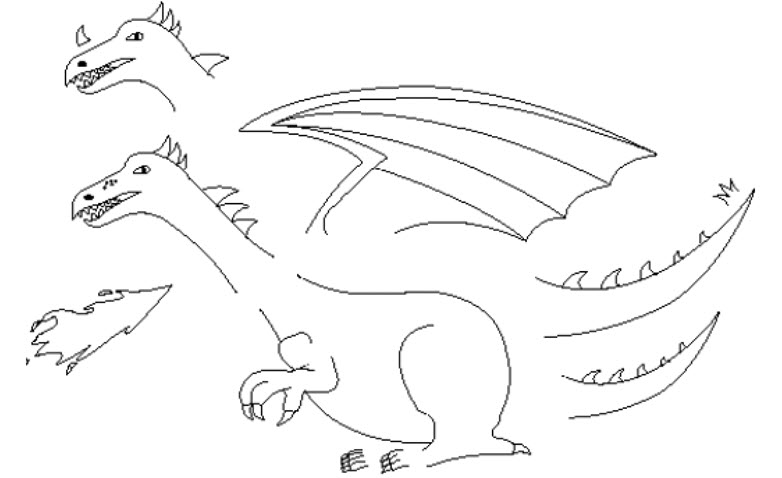การจำลองพันธุศาสตร์ของมังกร: กิจกรรมเพื่อการจัดการเรียนรู้การถ่ายทอดลักษณะทางพันธุกรรม
Main Article Content
Abstract
Worawut Sripho and Supaporn Porntrai
รับบทความ: 9 กันยายน 2557; ยอมรับตีพิมพ์: 15 พฤศจิกายน 2557
บทคัดย่อ
งานวิจัยนี้มีวัตถุประสงค์เพื่อ (1) สำรวจวิธีการจัดการเรียนรู้เรื่องการถ่ายทอดลักษณะทางพันธุกรรม (2) พัฒนากิจกรรมการเรียนรู้แบบสืบเสาะเรื่องการถ่ายทอดลักษณะทางพันธุกรรมที่ใช้การจำลองและ role-playing เป็นฐาน (3) ศึกษาผลสัมฤทธิ์ทางการเรียนก่อนเรียนและหลังเรียน และความก้าวหน้าทางการเรียน และ (4) ศึกษาความพึงพอใจของผู้เรียนต่อการจัดกิจกรรมการเรียนรู้ ขั้นตอนการวิจัยประกอบด้วย (1) การสำรวจวิธีการจัดการเรียนรู้เรื่องการถ่ายทอดลักษณะทางพันธุกรรม (2) การพัฒนากิจกรรมการเรียนรู้เรื่องการถ่ายทอดลักษณะทางพันธุกรรม (3) การประเมินประสิทธิภาพของกิจกรรม โดยนำไปใช้กับกลุ่มเป้าหมาย 2 กลุ่ม ได้แก่ นักเรียนชั้นมัธยมศึกษาปีที่ 6 จำนวน 38 คน และครูผู้สอนวิทยาศาสตร์ จำนวน 31 คน เก็บข้อมูลด้วยแบบวัดผลสัมฤทธิ์ทางการเรียนก่อนเรียนและหลังเรียนแบบอัตนัย จำนวน 6 ข้อ และ (4) ประเมินความพึงพอใจของผู้เรียน ผลการ วิจัยพบว่า (1) ในการจัดการเรียนรู้เรื่องการถ่ายทอดลักษณะทางพันธุกรรมครูเน้นการจัดการเรียนรู้แบบบรรยาย และนักเรียนมีการเรียนรู้แบบเชิงรับ (2) กิจกรรมนี้มีลักษณะการจัดการเรียนรู้เป็นแบบสืบเสาะวิทยาศาสตร์ 5E เน้นให้ผู้เรียนสร้างองค์ความรู้ด้วยตนเองผ่านการลงมือปฏิบัติ และได้รับการประเมินว่ามีคุณภาพดีทั้งในด้านเนื้อหา ลำดับขั้นตอนการจัดกิจกรรม และเครื่องมือประเมิน (3) ผลสัมฤทธิ์ทางการเรียนหลังเรียนของกลุ่มเป้าหมายครูและนักเรียนสูงกว่าผลสัมฤทธิ์ทางการเรียนก่อนเรียน (p < .05) และมีความก้าวหน้าทางการเรียนอยู่ในระดับสูงและปานกลาง ตามลำดับ และ (4) กลุ่มเป้าหมายมีความพึงพอใจต่อการจัดกิจกรรมการเรียนรู้นี้
คำสำคัญ: การจำลองพันธุศาสตร์ของมังกร การถ่ายทอดลักษณะทางพันธุกรรม พันธุศาสตร์
Abstract
This research aimed to (1) survey the teaching method used for teaching genetic inheritances; (2) develop learning activity for teaching genetic inheritances based upon simulation and role-playing; (3) study pre and post academic achievements including learning progression; and (4) study learners’ satisfaction on learning activity. Research methodology comprised of (1) surveying teaching method that some teachers used for teaching genetic inheritances; (2) developing learning activity; (3) evaluating its effectiveness by implementing for two targeted groups which were a total of 38 grade 12 students and 31 science teachers, and data were collected from pretest and posttest using 6-item essay test; and (4) evaluating learners’ satisfaction. The results showed that (1) for teaching genetic inheritance, lecture-based method was the general route used by teachers and students learned by passive learning.; (2) this activity was designed to be 5E inquiry cycle which allowed students themselves to build their own knowledge by active doing and was evaluated to have a good quality in contents, steps of activities and evaluation tools; (3) post-academic achievements of the targeted groups were significantly higher than pre-academic achievement (p < .05). Learning progression was at high level and medium level for teacher group and student group, respectively; and (4) the targeted groups were satisfied by this learning activity.
Keywords: Dragon Genetics Simulation, Genetic Inheritance, Genetics
Downloads
Article Details

This work is licensed under a Creative Commons Attribution-NonCommercial 4.0 International License.
References
กระทรวงศึกษาธิการ. (2549). รายงานการสังเคราะห์แนวคิดและวิธีการจัดการเรียนการสอนที่ส่งเสริมทักษะการคิดวิเคราะห์. กรุงเทพฯ: โรงพิมพ์ชุมนุมสหกรณ์การเกษตรแห่งประเทศไทย.
ไพฑูรย์ สินลารัตน์. (2543). ข้ออ่อนด้อยของงานวิชาการในระบบอุดมศึกษาไทย. อนุสารอุดมศึกษา 26(261): 14-17.
สมเกียรติ พรพิสุทธิมาศ. (2556). การจัดการเรียนรู้วิทยาศาสตร์ในศตวรรษที่ 21. วารสารหน่วยวิจัยวิทยาศาสตร์ เทคโนโลยี และสิ่งแวดล้อมเพื่อการเรียนรู้ 4(1): 55-63.
สุภาพร พรไตร. (2557). การพัฒนาผลสัมฤทธิ์ทางการเรียนเรื่อง ชีวิตกับสิ่งแวดล้อม ด้วยการจัดการเรียนรู้แบบสืบเสาะวิทยาศาสตร์ที่เน้นการคิดวิเคราะห์. วารสารหน่วยวิจัยวิทยาศาสตร์ เทคโนโลยี และสิ่งแวดล้อมเพื่อการเรียนรู้ 5(1): 11-20.
Banet, E., and Ayuso, E. (2000). Teaching genetics at secondary school: A strategy for teaching about the location of inheritance information. Science Education 84: 313-351.
Chinnici, J. P., Yue, J. W., and Torres, K. M. (2004). Students as “human chromosomes” in role-playing mitosis and meiosis. The American Biology Teacher 66(1): 35-39.
Galloway, K., and Anderson, N. (2014). Cootie genetics: Simulating Mendel’s experiments to understand the law of inheritance. The American Biology Teacher 76(3): 189-193.
Honeycutt, B. B., and Pierce, B. A. (2007). Illustrating probability in genetics with hands-on learning: Making the math real. The American Biology Teacher 69(9): 544-551.
Hudson, M.L. (2012). Easy, cheap, fun: Role-play on endocrine regulation and negative feedback. The American Biology Teacher 74(9): 644-646.
Johnson, N. L., Lang-Walker, R., Fail, J. L., and Champion, T. D. (2012). A student activity that simulates evolution. The American Biology Teacher 66(1): 35-39.
Lewis, J., and Kattmann, U. (2004). Traits, genes, particles and information: Re-visiting students’ understandings of genetics. International Journal of Science Education 26: 195-206.
Lewis, J., and Wood-Robinson, C. (2000). Genes, chromo-somes, cell division and inheritance – Do students see any relationship? International Journal of Science Education 22: 177-195.
Moore, D., Holbrook, C. T., Meadows, M. G., and Taylor, L. A. (2012). The mating game: A classroom activity for undergraduates that explores the evolutionary basis of sex roles. The American Biology Teacher 74(9): 648-651.
Ong, B. (2010). A play of protein synthesis in the classroom. The American Biology Teacher 72(9): 564-566.
Ray, D. L. (2008). Demonstrating independent assort-ment of chromosomes, square dance Style. The American Biology Teacher 70(7): 394-394.
Riechert, S. E., Leander, R. N., and Lenhart, S. M. (2011). The role-playing exercise that demon-strate the process of evolution by natural selection: Caching squirrels in a world of pilferers. The American Biology Teacher 73(4): 208-212.
Ross, P. M., Tronson, D. A., and Ritchie, R. J. (2008). Increasing conceptual understanding of glycol-lysis and Krebs cycle using role-play. The American Biology Teacher 70(3): 163-168.
Tsui, C. Y., and Treagust, D. F. (2007). Understanding genetics: Analysis of secondary school students’ conceptual status. Journal of research in Science Teaching 44: 205-235.
Williams, M., Montgomery, B. L., and Manokore, V. (2012). From phenotype to genotype: exploring middle school students’ understanding of genetics inheritance in a web-based environment. The American Biology Teacher 74(1): 35-40.
Wyn, M. A., and Stegink, S. J. (2000). Role-playing mitosis. The American Biology Teacher 62(5): 378-381.
